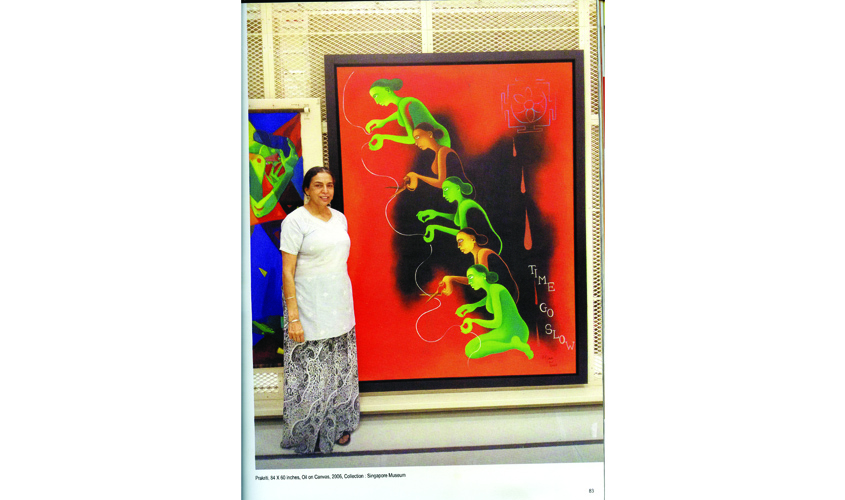The young girl at the time didn’t know that she would go on to make a name for herself in the world of visual arts, much like Sher-Gil had done so many years ago.
Arpana, now 62, has been exhibiting since 1974. She is an internationally renowned painter and sculptor, who continues to astonish and enchant the viewer with her work.
A retrospective of her work, composed of a selection of paintings and sketches, panning over four decades, is soon to be hosted at the National Gallery of Modern Art in Bengaluru, organised by the Noida-based Swaraj Art Archive.
“Arpana Caur is a very important artist in the history of India. It is terrible that we only talk about artists who are no longer there. We are one of the largest collectors of Arpana’s work and we believe in her work. We have known her since a long time and we thought why not take this alliance forward and do a retrospective with her,” says Smriti Rajgarhia Bhatt, director, Swaraj Art Archive.

The show is centred on a number of different themes. Prarthana Tagore, one of the curators of the exhibition, tells Guardian 20, “The artworks are presented in segments like “Gandhi”, “Dharti”, “World Goes On”, among others. We have explained her influences in each segment. The exhibition is designed in such a way that even a person who doesn’t have much knowledge of her work can easily understand her art.”
The life-size paintings by Arpana depict the duality of human existence. “I have always been fascinated by the contrast between two objects. I have tried to represent the same through my paintings. In the painting titled, Outside the Blue Gallery, I have portrayed the economic gap between people, particularly the life of the poor. There are these two worlds and it is difficult for me to come to terms with economic disparities between people which we witness daily. Similarly, to represent this duality I have also painted a series called Day and Night,” says Arpana.
Being the daughter of writer Ajeet Caur, a Padma Shri awardee, Arpana has gained an insight into the world of art. She says, “I have always been surrounded by art, culture, music and history since childhood. This has largely affected my art practice. My mother exposed me to all cultures and philosophies. I equally believe in the Buddha, Nanak and Kabir. Like every other artist, I draw what I imbibe from my surroundings.”
Arpana, now 62, has been exhibiting since 1974. She is an internationally renowned painter and sculptor, who continues to astonish and enchant the viewer with her work.
The year 1986 marked another turning point in her life. “My work, World goes on, on the Sikh massacre won at the sixth Delhi Triennale.” The painting is now a part of the collection of the NGMA, Bengaluru.
The artist, who is a nature lover, did a series called Triptych in the 1990s. It represents her affinity towards natural world. “A large area of the park near my home was cut for commercial purposes,” she says. “The rich flora and fauna was lost. A number of peacocks were devoured by dogs which affected me badly. My catharsis was to paint this series.”

Arpana’s aesthetic draws a lot from the miniature painting tradition of India. In her latest work, there is a sense of abstraction in her figures. The artist’s gaze has moved from concrete figuration to an element of abstraction. One recurring motif –a pair of scissors – can be found in many of her works. Along with addressing social issues through art (the 1984 Sikh riots, plight of women and the widows of Vrindavan), Arpana also incorporates the elements of folk art in her paintings. She has painted non-commercial murals in public spaces in Bengaluru, Delhi, Hamburg and Kathmandu.
Aparna’s works are now a part of many galleries both in India and abroad. The list includes Victoria & Albert Museum, London; Museum of Contemporary Art, Los Angeles; Peabody Essex Museum, Boston; Glenbarra Museum, Japan; Rockefeller Collection, New York; Bradford Museum, among several others.“This is one thing I am really proud of,” Arpana says.
Four Decades, A Painter’s Journey, A retrospective of works by Arpana Caur will be showcased at NGMA, Bengaluru from 4 November to 4 December

